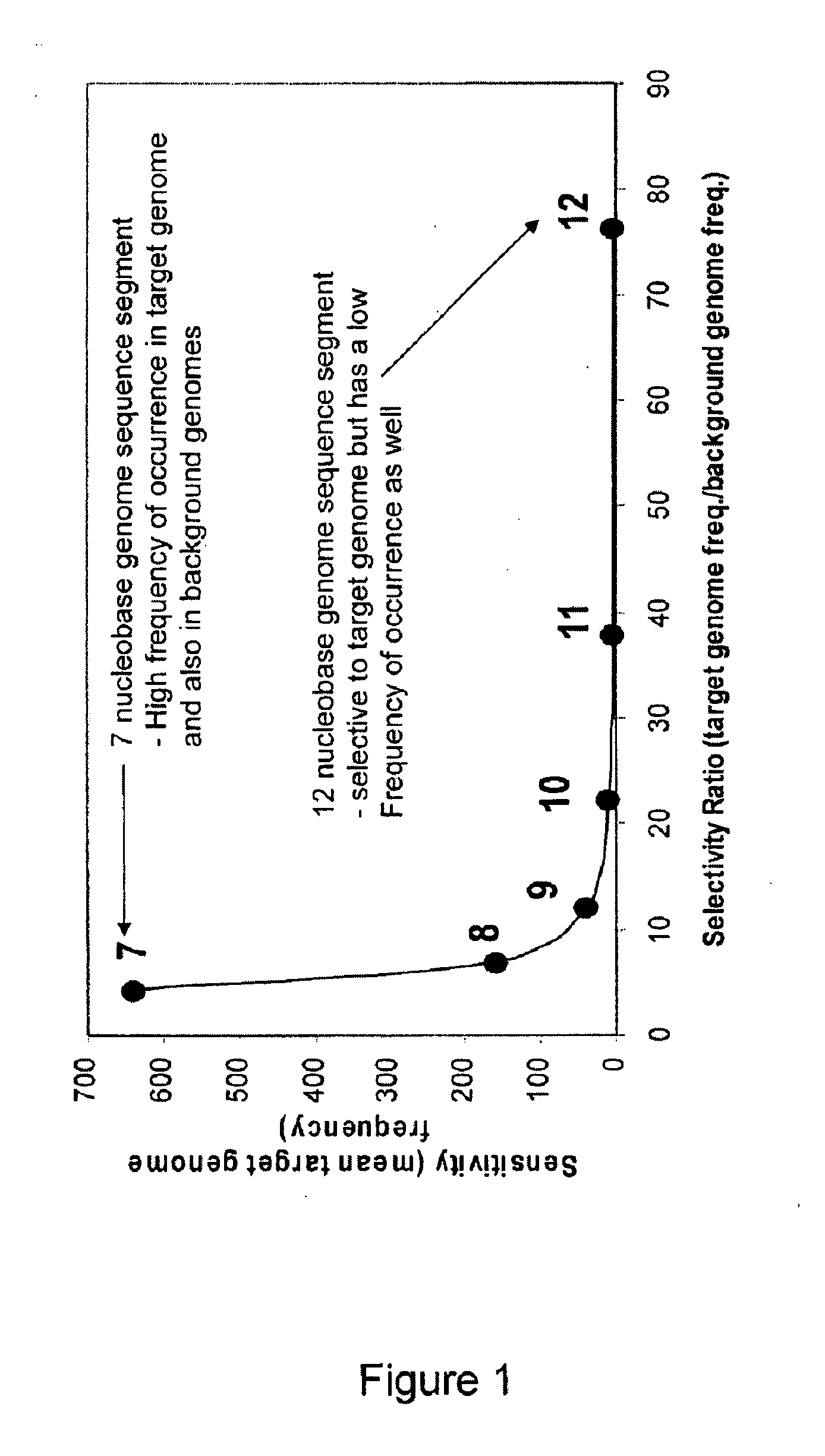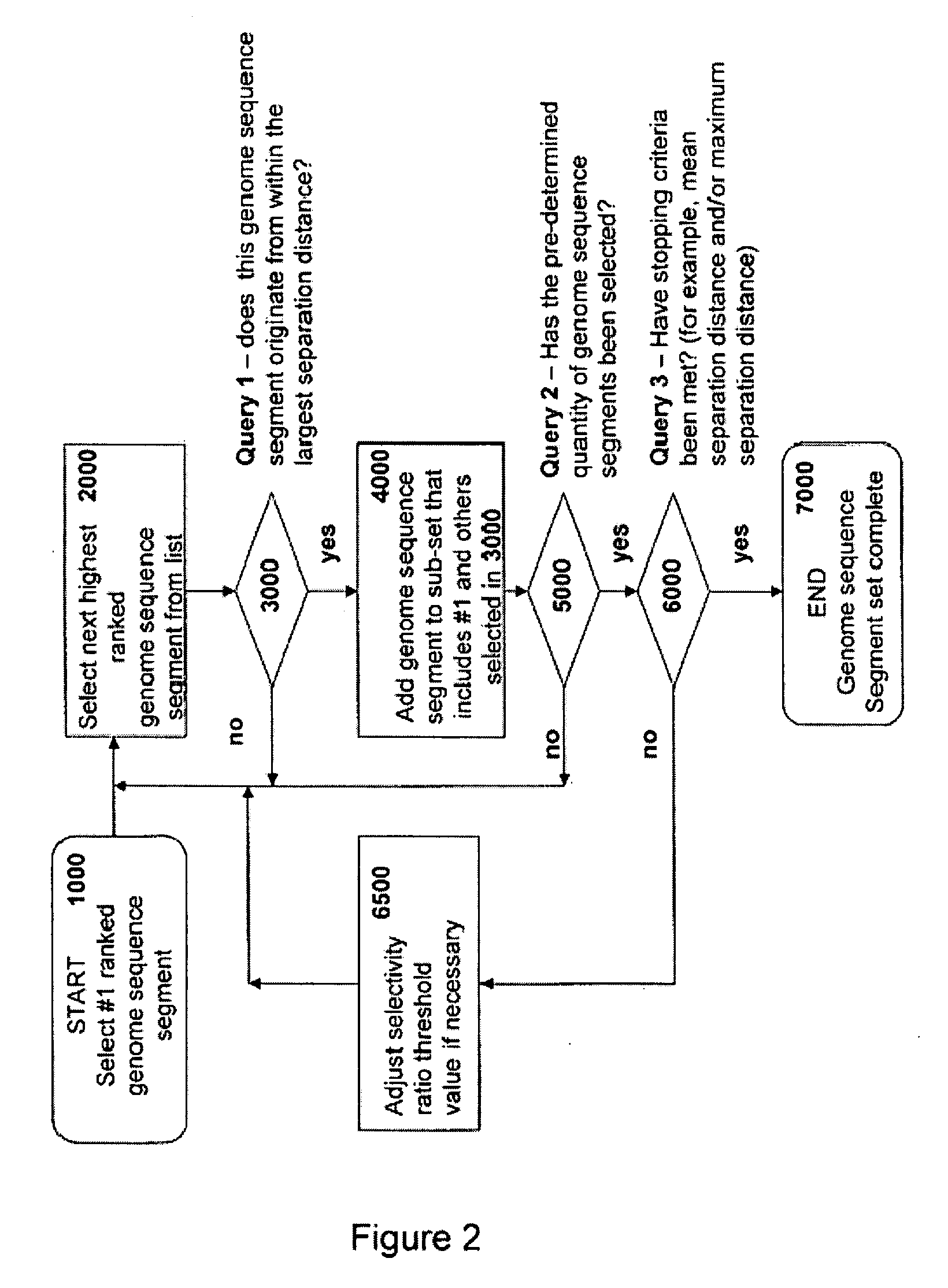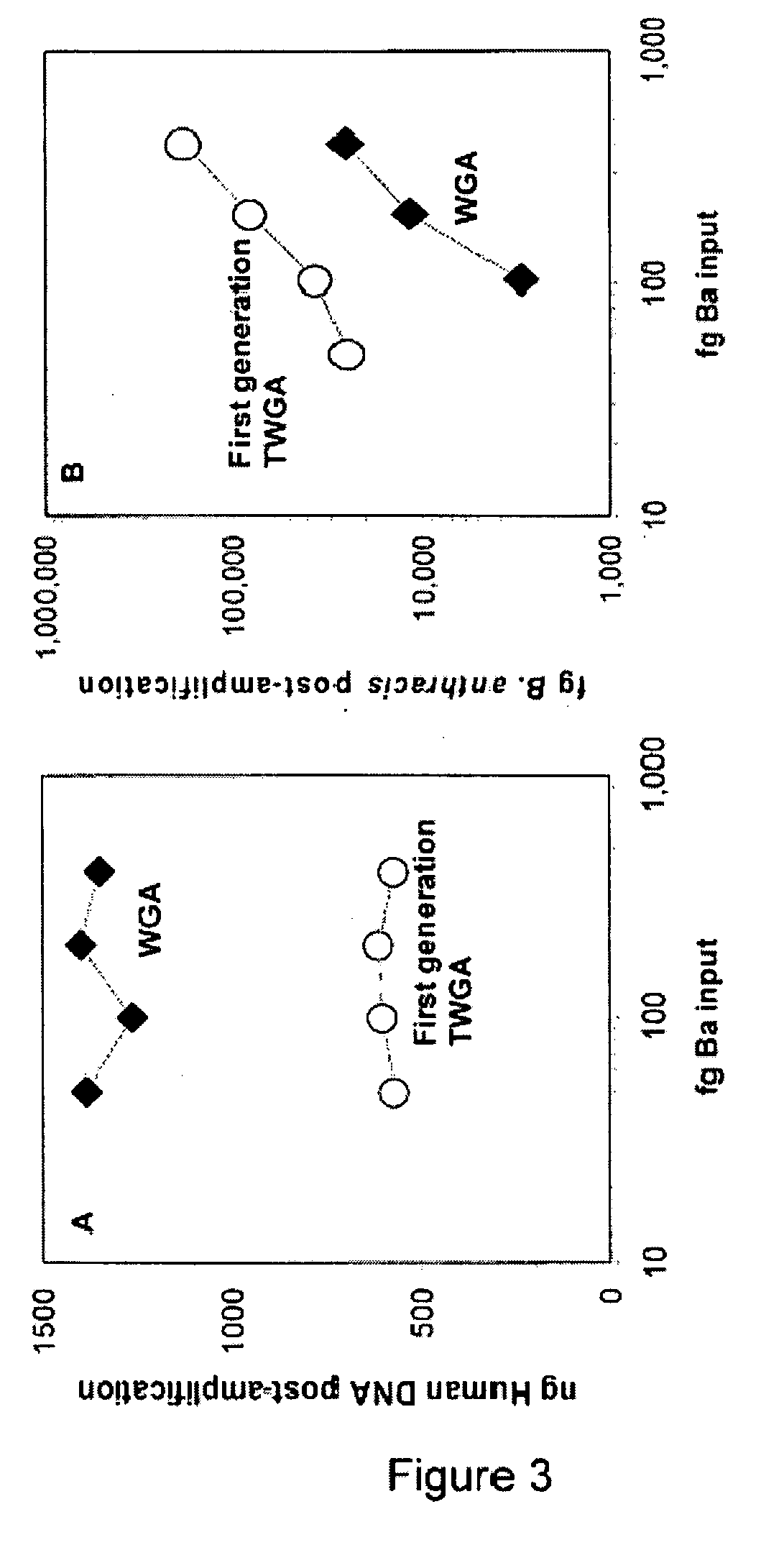Targeted whole genome amplification method for identification of pathogens
a technology of amplification and whole genome, applied in the field of amplifying nucleic acid sequences, can solve the problems of incomplete genome coverage, limiting the type and quantity of genetic tests, and unable to amplify certain sequences, and achieves the effect of high processivity enzymes and high processivity polymeras
- Summary
- Abstract
- Description
- Claims
- Application Information
AI Technical Summary
Problems solved by technology
Method used
Image
Examples
example 1
Identification and Ranking of Genome Sequence Segments
[0276]This example illustrates the process of identification of unique genome sequence segments of 6 to 12 nucleobases in length, as well as determination of frequency of occurrence and selectivity ratio values for a simplified hypothetical genome model system consisting of a single target genome having the sequence: aaaaaaaaaattttttttttccccccccccgggggggggg ((SEQ ID NO: 16) base composition of A10 T10 C10 and G10) with two background genomes having the following sequences aaaaaaaattttttttccccccccgggggggg (SEQ ID NO: 17) Bkg 1: base composition of A8 T8 C8 G8) and aaaaaaaaaatttttttttt (SEQ ID NO: 18) Bkg 2: base composition of A10 T10 C0 G0). Table 2 provides a list of all unique genome sequence segments for the target genome and indicates the frequency of occurrence of each genome sequence segment in the target genome and in the background genomes. For example, the genome sequence segment having the sequence of eight consecutive ...
example 2
In Silico Method for Design of Primers for Targeted Whole Genome Amplification
[0277]Some embodiments of the methods disclosed herein are in silico methods for selecting primers for targeted whole genome amplification. The primers are selected by first defining the target genome(s) and background genome(s). For the target genome(s), all unique genome sequence segments of lengths of about 5 to about 13 nucleobases in length are determined by a set of computer executable instructions stored on a computer-readable medium.
[0278]In some embodiments, the target and background genome segments are obtained from public databases such as GenBank, for example. The frequency of occurrence values of members of the genome sequence segments in the target genome(s) and background genome(s) are determined by computer executable instructions such as a BLAST algorithm for example. The selectivity ratio values of members of the genome sequence segments are determined by computer executable mathematical ...
example 3
Selection of Primer Sets for Targeted Whole Genome Amplification
[0287]In a first example for targeted whole genome amplification, Bacillus anthracis Ames was chosen as a single target genome. The set of background genomes included the genomes of: Homo sapiens, Gallus gallus, Guillardia theta, Oryza sativa, Arabidopsis thaliana, Yarrowia lipolytica, Saccharomyces cerevisiae, Debaryomyces hansenii, Kluyveromyces lactis, Schizosaccharoyces pom, Aspergillus fumigatus, Cryptococcus neoformans, Encephalitozoon cuniculi, Eremothecium gossypii, Candida glabrata, Apis mellifera, Drosophila melanogaster, Tribolium castaneum, Anopheles gambiae, and Caenorhabditis elegans. These background genomes were chosen because they would be expected to be present in a typical soil sample handled by a human.
[0288]Unique genome sequence segments 7 to 12 nucleobases in length were identified. Frequency of occurrence and selectivity ratio values were determined. As a result, 200 genome sequence segments were...
PUM
| Property | Measurement | Unit |
|---|---|---|
| frequency of occurrence threshold | aaaaa | aaaaa |
| frequency of occurrence threshold | aaaaa | aaaaa |
| frequency of occurrence threshold | aaaaa | aaaaa |
Abstract
Description
Claims
Application Information
 Login to View More
Login to View More - R&D
- Intellectual Property
- Life Sciences
- Materials
- Tech Scout
- Unparalleled Data Quality
- Higher Quality Content
- 60% Fewer Hallucinations
Browse by: Latest US Patents, China's latest patents, Technical Efficacy Thesaurus, Application Domain, Technology Topic, Popular Technical Reports.
© 2025 PatSnap. All rights reserved.Legal|Privacy policy|Modern Slavery Act Transparency Statement|Sitemap|About US| Contact US: help@patsnap.com



